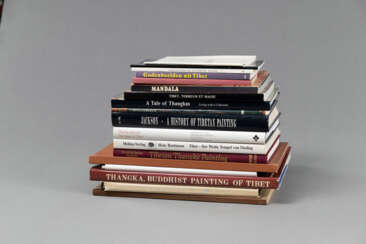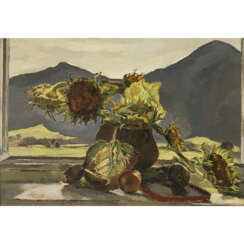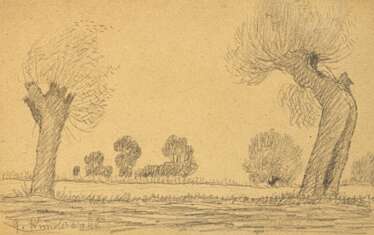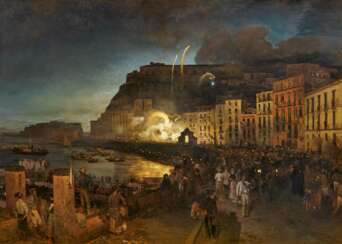oßwald
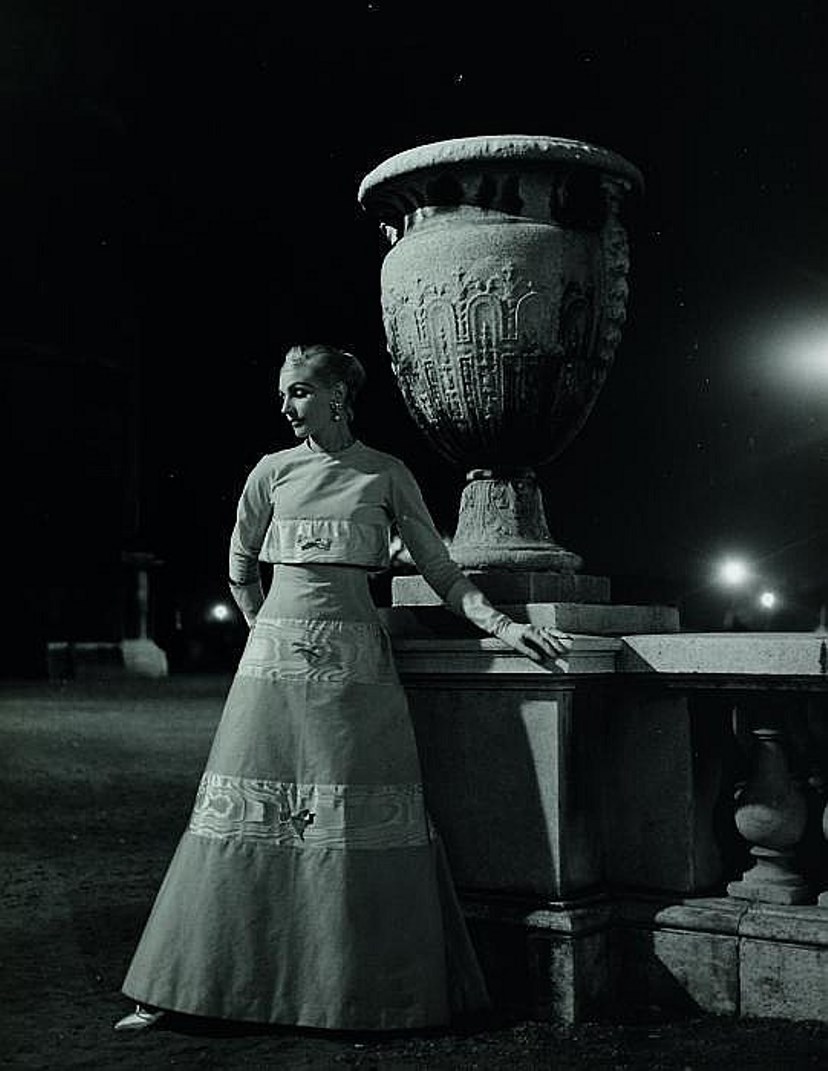
Walde Huth, née Waldberta Huth, is a German photographer known for her street photos and portraits of famous people and fashion models.
She graduated from the State School of Applied Arts in Weimar, and after World War II she became a freelance photographer doing portrait and art photography. Walde Huth is primarily known for her fashion shots of the '50s, she also took unique stills and advertising photos, and created portraits of famous contemporaries. Her iconic fashion shots were taken in Paris. She shot the most famous models of her time not in the studio, but on location in the city, in front of the Eiffel Tower, along the Seine River, in contrast to the architecture and street life.
Walde Huth was an exceptional woman, a creative artist and a versatile photographer.


Richard Seewald was a German painter, graphic artist, illustrator and educator.
Seewald studied architecture at the Munich Polytechnic Institute, but soon turned to painting and collaborated with magazines that published his cartoons. He soon mastered etching and etching, became a member of the New Munich Secession in 1913, and illustrated an edition of Robinson Crusoe, Penthesilea (Heinrich von Kleist) and his first book.
In 1924 Seewald was appointed to a teaching position at the Werkschule in Cologne; in 1931 he settled in Ticino, where he received commissions for murals in churches and other church buildings. In 1954 Richard Seewald accepted an offer to become a professor at the Academy of Fine Arts in Munich, and resigned four years later after a disagreement with the academy's presidium. After his wife's death, he burned about 150 of his paintings, as well as hundreds of sketches, drafts, and correspondence. In the late 1960s, Seewald designed windows for the Herz-Jesu-Kirche (Sacred Heart Church) in Munich-Neuhausen and St. Michael's Church in Iserlo.


Richard Seewald was a German painter, graphic artist, illustrator and educator.
Seewald studied architecture at the Munich Polytechnic Institute, but soon turned to painting and collaborated with magazines that published his cartoons. He soon mastered etching and etching, became a member of the New Munich Secession in 1913, and illustrated an edition of Robinson Crusoe, Penthesilea (Heinrich von Kleist) and his first book.
In 1924 Seewald was appointed to a teaching position at the Werkschule in Cologne; in 1931 he settled in Ticino, where he received commissions for murals in churches and other church buildings. In 1954 Richard Seewald accepted an offer to become a professor at the Academy of Fine Arts in Munich, and resigned four years later after a disagreement with the academy's presidium. After his wife's death, he burned about 150 of his paintings, as well as hundreds of sketches, drafts, and correspondence. In the late 1960s, Seewald designed windows for the Herz-Jesu-Kirche (Sacred Heart Church) in Munich-Neuhausen and St. Michael's Church in Iserlo.


Oswald Achenbach was a German painter associated with the Düsseldorf school of painting. Though little known today, during his lifetime he was counted among the most important landscape painters of Europe. Through his teaching activities, he influenced the Kunstakademie Düsseldorf. His brother, Andreas Achenbach, who was twelve years older, was also among the most important German landscape painters of the 19th century. The two brothers were humorously called "the A and O of Landscapes" (a reference to their initials matching a common German reference to the Alpha and Omega).




Oswald Brückner was a German sculptor, draftsman, and metal foundry worker.
He created portraits of famous compatriots, gravestones, and fountains.


Oswald Achenbach was a German painter associated with the Düsseldorf school of painting. Though little known today, during his lifetime he was counted among the most important landscape painters of Europe. Through his teaching activities, he influenced the Kunstakademie Düsseldorf. His brother, Andreas Achenbach, who was twelve years older, was also among the most important German landscape painters of the 19th century. The two brothers were humorously called "the A and O of Landscapes" (a reference to their initials matching a common German reference to the Alpha and Omega).


Oswald Achenbach was a German painter associated with the Düsseldorf school of painting. Though little known today, during his lifetime he was counted among the most important landscape painters of Europe. Through his teaching activities, he influenced the Kunstakademie Düsseldorf. His brother, Andreas Achenbach, who was twelve years older, was also among the most important German landscape painters of the 19th century. The two brothers were humorously called "the A and O of Landscapes" (a reference to their initials matching a common German reference to the Alpha and Omega).


Oswald Achenbach was a German painter associated with the Düsseldorf school of painting. Though little known today, during his lifetime he was counted among the most important landscape painters of Europe. Through his teaching activities, he influenced the Kunstakademie Düsseldorf. His brother, Andreas Achenbach, who was twelve years older, was also among the most important German landscape painters of the 19th century. The two brothers were humorously called "the A and O of Landscapes" (a reference to their initials matching a common German reference to the Alpha and Omega).


Oswald Brückner was a German sculptor, draftsman, and metal foundry worker.
He created portraits of famous compatriots, gravestones, and fountains.


Oswald Achenbach was a German painter associated with the Düsseldorf school of painting. Though little known today, during his lifetime he was counted among the most important landscape painters of Europe. Through his teaching activities, he influenced the Kunstakademie Düsseldorf. His brother, Andreas Achenbach, who was twelve years older, was also among the most important German landscape painters of the 19th century. The two brothers were humorously called "the A and O of Landscapes" (a reference to their initials matching a common German reference to the Alpha and Omega).


Gustav Wunderwald was a German painter and stage designer, a representative of the New Objectivity movement.
Wunderwald studied painting at the Cologne studio of Wilhelm Kuhn and worked as a designer in Gotha. Since 1912 Wunderwald served as a set designer at the Deutsche Oper in Berlin. As a painter Wunderwald created about 200 paintings in various genres.


Oswald Achenbach was a German painter associated with the Düsseldorf school of painting. Though little known today, during his lifetime he was counted among the most important landscape painters of Europe. Through his teaching activities, he influenced the Kunstakademie Düsseldorf. His brother, Andreas Achenbach, who was twelve years older, was also among the most important German landscape painters of the 19th century. The two brothers were humorously called "the A and O of Landscapes" (a reference to their initials matching a common German reference to the Alpha and Omega).


Oswald Achenbach was a German painter associated with the Düsseldorf school of painting. Though little known today, during his lifetime he was counted among the most important landscape painters of Europe. Through his teaching activities, he influenced the Kunstakademie Düsseldorf. His brother, Andreas Achenbach, who was twelve years older, was also among the most important German landscape painters of the 19th century. The two brothers were humorously called "the A and O of Landscapes" (a reference to their initials matching a common German reference to the Alpha and Omega).


Oswald Achenbach was a German painter associated with the Düsseldorf school of painting. Though little known today, during his lifetime he was counted among the most important landscape painters of Europe. Through his teaching activities, he influenced the Kunstakademie Düsseldorf. His brother, Andreas Achenbach, who was twelve years older, was also among the most important German landscape painters of the 19th century. The two brothers were humorously called "the A and O of Landscapes" (a reference to their initials matching a common German reference to the Alpha and Omega).


Oswald Achenbach was a German painter associated with the Düsseldorf school of painting. Though little known today, during his lifetime he was counted among the most important landscape painters of Europe. Through his teaching activities, he influenced the Kunstakademie Düsseldorf. His brother, Andreas Achenbach, who was twelve years older, was also among the most important German landscape painters of the 19th century. The two brothers were humorously called "the A and O of Landscapes" (a reference to their initials matching a common German reference to the Alpha and Omega).


Gustav Wunderwald was a German painter and stage designer, a representative of the New Objectivity movement.
Wunderwald studied painting at the Cologne studio of Wilhelm Kuhn and worked as a designer in Gotha. Since 1912 Wunderwald served as a set designer at the Deutsche Oper in Berlin. As a painter Wunderwald created about 200 paintings in various genres.


Gustav Wunderwald was a German painter and stage designer, a representative of the New Objectivity movement.
Wunderwald studied painting at the Cologne studio of Wilhelm Kuhn and worked as a designer in Gotha. Since 1912 Wunderwald served as a set designer at the Deutsche Oper in Berlin. As a painter Wunderwald created about 200 paintings in various genres.


Gustav Wunderwald was a German painter and stage designer, a representative of the New Objectivity movement.
Wunderwald studied painting at the Cologne studio of Wilhelm Kuhn and worked as a designer in Gotha. Since 1912 Wunderwald served as a set designer at the Deutsche Oper in Berlin. As a painter Wunderwald created about 200 paintings in various genres.


Oswaldo Guayasamín is an Ecuadorian painter, muralist and sculptor.
Oswaldo's father was an Indian, and the family was very poor, but the future artist was educated at the School of Fine Arts of Quito. Soon, literally in two years, he created a cycle of 103 paintings dedicated to the life of oppressed Indians in Latin America. Oswaldo Guayasamin also painted portraits of famous contemporaries, including Fidel Castro, whom he admired. He also created murals, frescoes, landscapes, and symbolic images.
The artist's works were exhibited in Paris, Moscow and in Leningrad, among other cities around the world, with amazing success. In 1957, at the Fourth Biennial in São Paulo, he was named the best South American artist.
Guayasamin was also a passionate collector. In 1978, the then famous artist donated to the State of Ecuador some 500 colonial paintings and sculptures, pre-Columbian archaeological sites, Goya and Picasso paintings that he had collected.


Otto Rodewald is a German painter and graphic designer.
Rodewald studied at the Hamburg State Art School and participated in exhibitions. Rodewald traveled extensively, mostly in Europe and the Middle East; between 1929 and 1931 he lived in the Tunisian artists' village of Sidi Bou Said, where he was captivated by Eastern exoticism. His style can be categorized as magical realism and new objectivity. He also painted portraits in the Neo-Saxon style.
Otto Rodewald later co-founded the art club Die Insel and from 1928, after participating in several exhibitions, became a permanent member of the Hamburg Secession and a member of the Hamburg Artists' Association.
During the National Socialists' campaign against degenerate art in 1933, some of Rodewald's works were banned, but in order to survive, the artist continued to work with Hitler's government, fulfilling their commissions. After the end of World War II, the artist remained active until his death.








